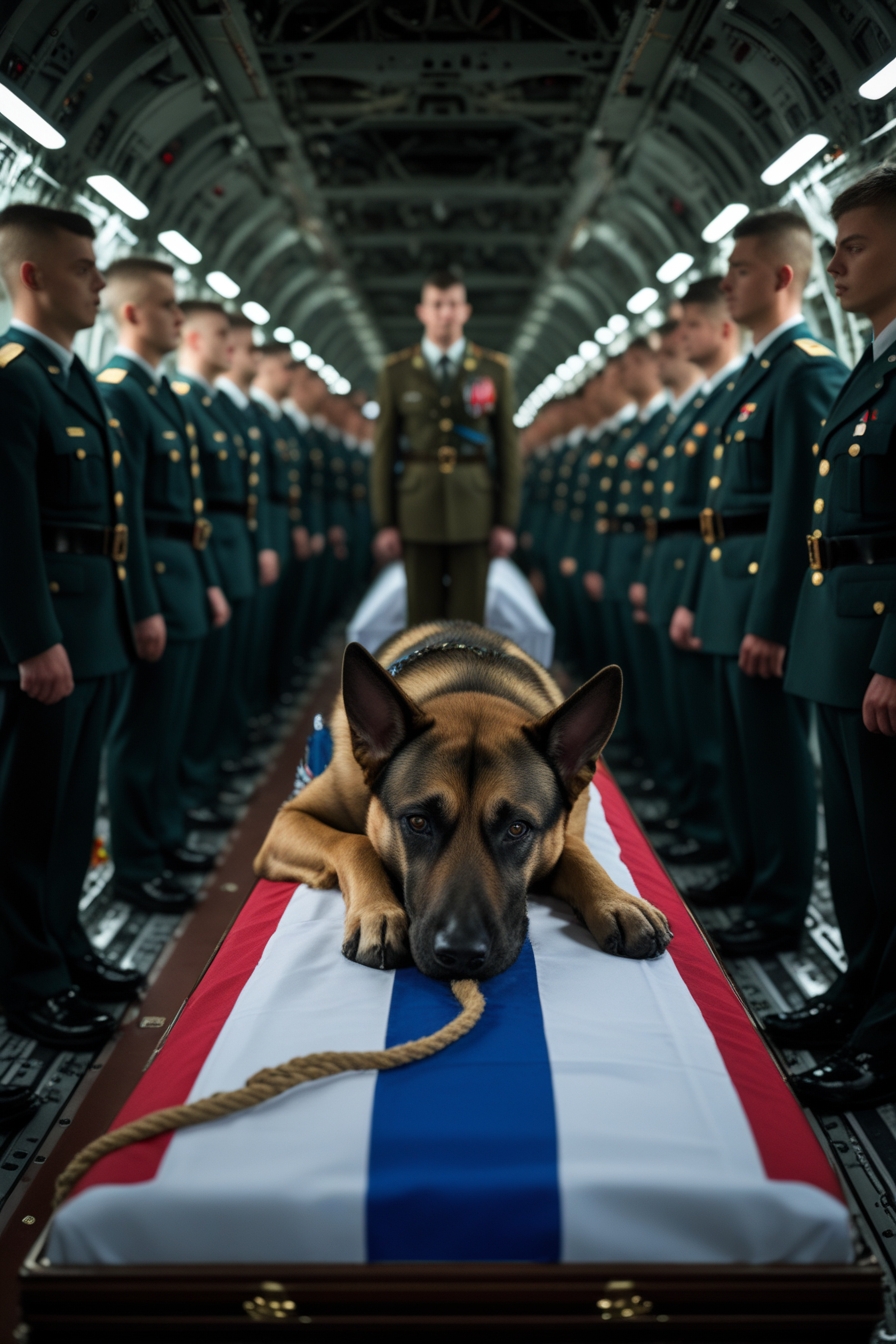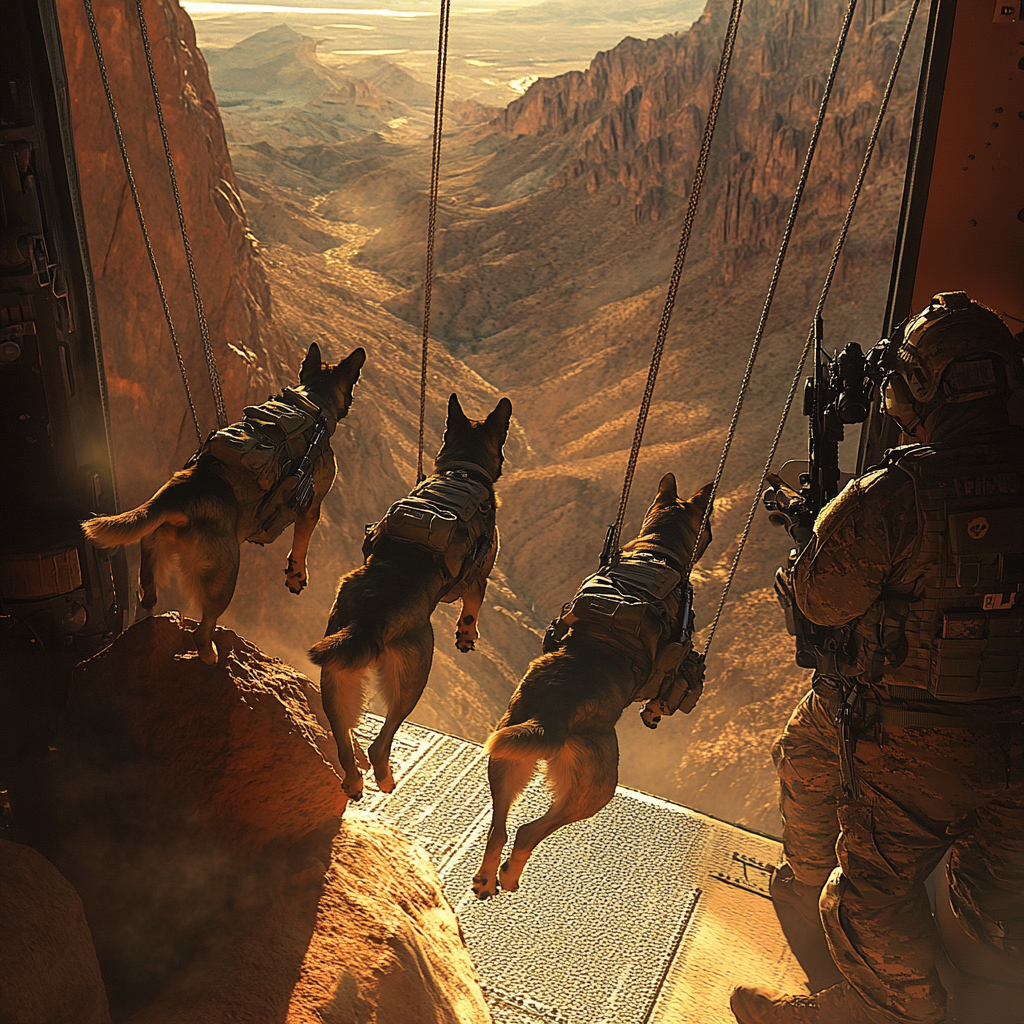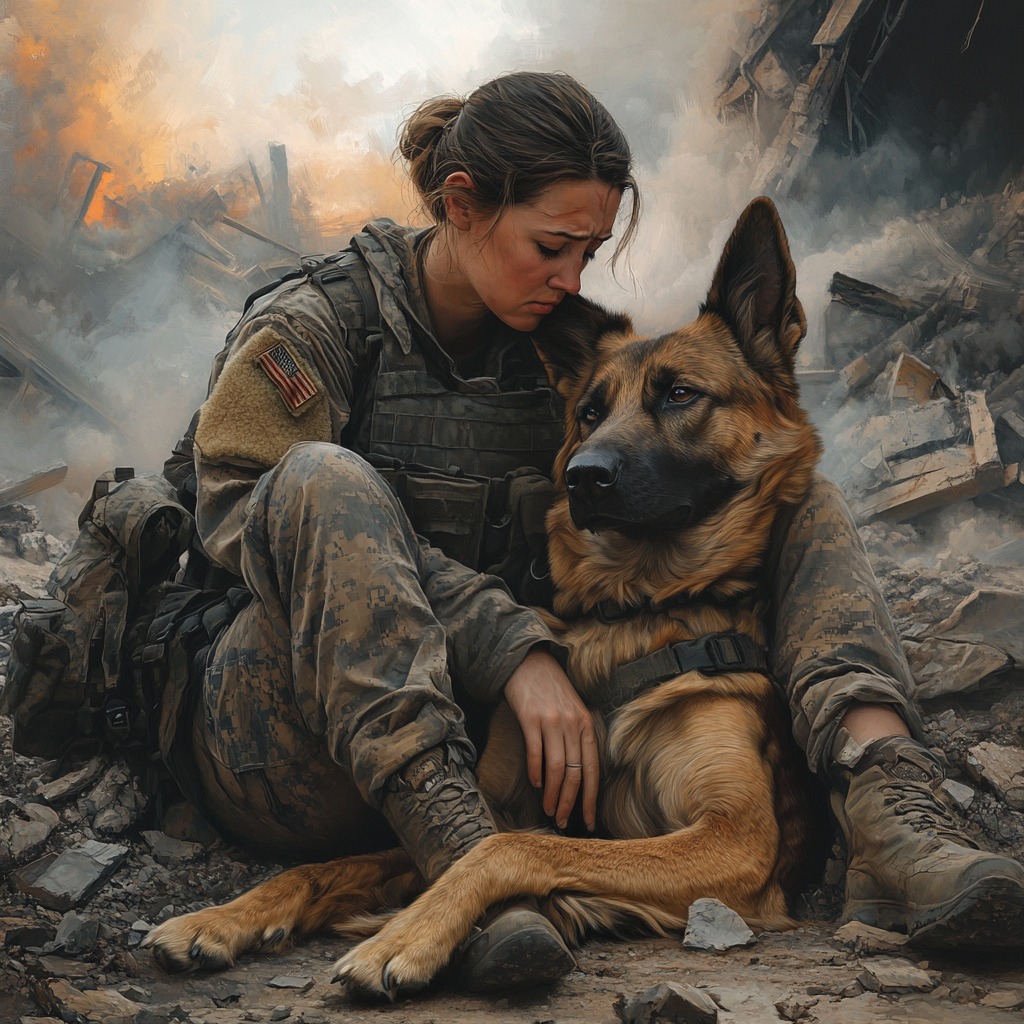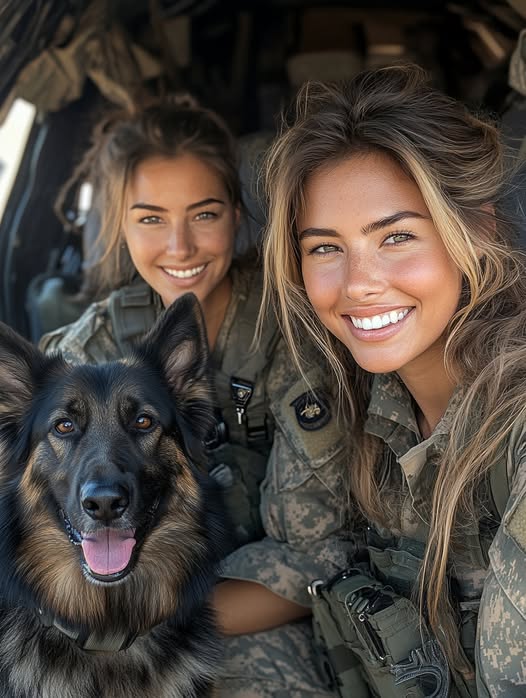When the Mission Failed and the Helicopter Went Down, Only K9 Odin Kept the Survivors Alive
The mission was already teetering on the edge of chaos when the Black Hawk took off under a cloak of night. The unit was exhausted, the terrain unrelenting. K9 Odin, a massive sable Belgian Malinois, sat at his handler’s feet, ever alert. He was more than a tracker — he was a lifeline. The assignment had been to extract a high-value target in the mountains of eastern Afghanistan. But just as the chopper ascended above the ridgeline, a sudden burst of gunfire ripped through the fuselage. Alarms blared. Metal shrieked. And in seconds, they were spiraling toward the earth.
When the helicopter hit the ground, it tore through rocks and brush like paper. The crash killed two instantly. The others, bloodied and disoriented, scrambled from the wreckage as fire licked at the hull. Sergeant Matt Carver, Odin’s handler, had been thrown clear but unconscious. Amid the confusion, it was Odin who went to work. First, he pulled at Carver’s vest, dragging him away from the burning helicopter. Then he circled back, nudging wounded soldiers toward cover, his body language sharp, insistent. In those first frantic moments, Odin wasn’t just a dog — he was a commander.
For two full days and nights, the survivors waited for extraction in hostile territory. The radio was dead, and flares had failed. The mountainous terrain blocked signals and created a silence that was almost more terrifying than enemy fire. Odin never left their side. He stood sentry at the edge of camp, ears high, eyes locked on every shadow. When nerves frayed and panic crept in, Odin moved from man to man, resting his head on a knee, sitting beside the injured. Soldiers later said it was his presence that held them together — that the sight of Odin standing, alert and strong, gave them strength they didn’t know they had.
On the second night, a small group of insurgents closed in. The soldiers, weakened and low on ammunition, braced for the worst. But Odin’s warning growl came early enough for them to reposition. His low snarl was the first alert. He lunged into the dark, forcing a would-be attacker back into cover. That bought the unit time — just enough time — for a rescue team to break through and secure their extraction. When the dust finally settled and the helicopters lifted them out, Odin was the last to board, eyes scanning the hills until the very end.
Today, Odin is retired, living with Sergeant Carver in Colorado. He bears a few scars, and his coat has dulled, but his eyes still gleam with the same intensity that saved lives in the mountains. His story has become legend — not just for his actions during the crash, but for his strength in the silence that followed. Odin didn’t just guard the perimeter. He guarded their hope. And in those 48 hours of darkness and despair, that was the most valuable mission of all.







